These Designer-Led Projects Are Addressing Some Of Singapore's Most Pressing Challenges
Whether it's single-use plastics generated by our takeaway culture, the future of brick-and-mortar retail, or workplace mental health and well-being.
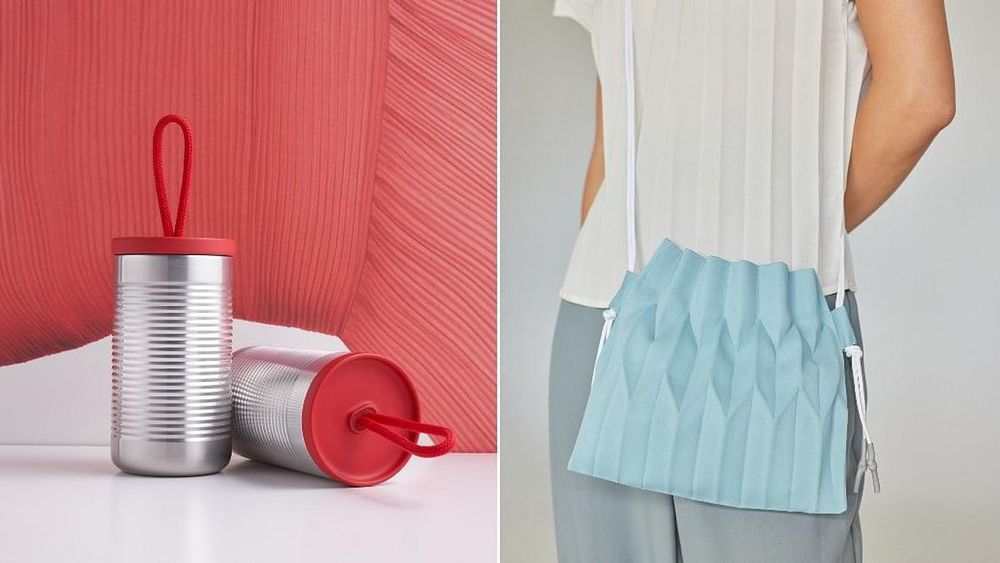
Launched in March 2020 by DesignSingapore Council, the Good Design Research (GDR) initiative empowers designers and design enterprises in Singapore to design for positive impact and innovative solutions through industry support, intensive research and experimentation.
17 selected projects spanning across the fields of fashion, music and art, mental health, and industrial manufacturing, will be showcased at the National Design Centre as part of GDR's first-ever showcase, happening now till September 2022. The 11-month rotating showcase features projects that address some of Singapore's biggest challenges—whether it’s the environmentally detrimental use of single-use plastics generated by our takeaway culture, or the future of brick-and-mortar retail amid a booming e-commerce landscape.
We chat with Forest & Whale's Gustavo Maggio, GINLEE Studio's Tamir Niv, and Common Ground's Debra Lam (on behalf of Khee Shi Hui) to find out more about their meaningful projects, their design processes, as well as their hopes and aspirations.
Related article: Sustainable Loungewear Label NOST Celebrates Heritage Crafts Through Innovation
Reuse Lab by Forest & Whale
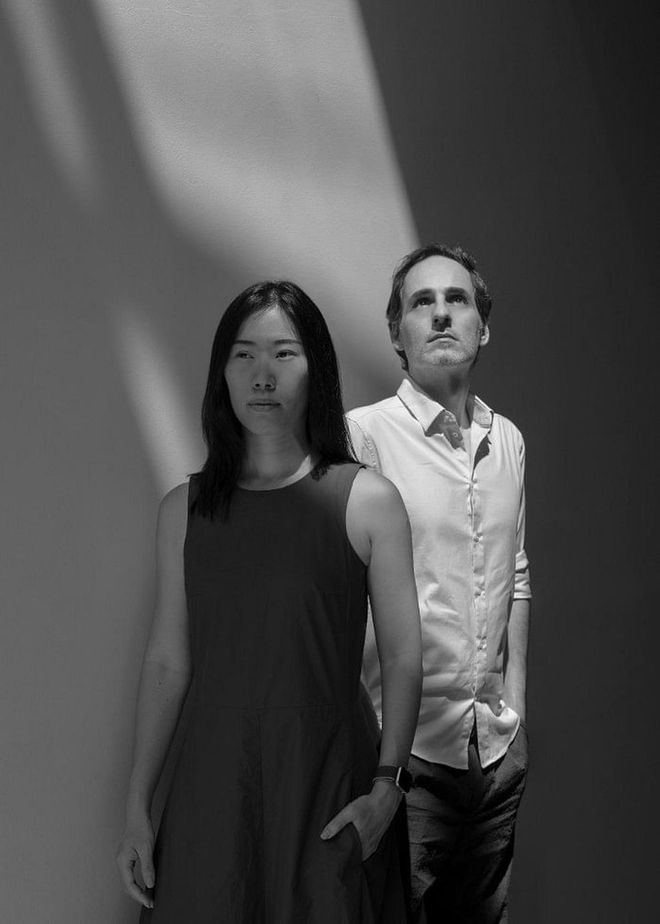
Forest & Whale's Wendy Chua and Gustavo MaggioPhoto: Courtesy
Forest & Whale Wendy Chua and Gustavo Maggio
Tell us about Reuse Lab as part of DesignSingapore's GDR initiative.
Forest & Whale founded the Reuse Lab as a design research laboratory to respond to the challenge of reducing single-use waste. Supported by the GDR initiative, we have researched and developed alternative models to disposable food and drink containers within different ecosystems. From edible and compostable materials to reusable containers that circulate within the system, we developed circular innovations that remove the need to dispose altogether.
What drew you to the idea of redesigning 'dabao' culture?
In the last few years, with the change in consumer habits and the convenience of food deliveries, our reliance on single-use food packaging has increased dramatically. With the nations that traditionally imported waste pulling the plug on such practices, many developed countries have to find alternative ways to deal with their waste within their own borders. Reducing disposable waste is one of the key global issues that the United Nations’ Sustainable Development Goals have sought to resolve through advocating for responsible consumption and production. In Singapore, there is also greater urgency to create more sustainable practices since our only landfill will run out of space by 2035. In Asia, the “dabao” culture is very common, partly due to food variety and lower cost compared to cooking at home.
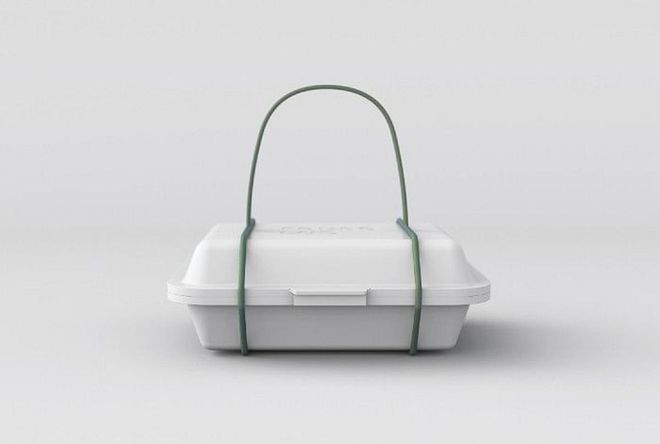
Reuse Lab's Clamshell Reusable ContainerPhoto: Courtesy
Reuse Lab Clamshell Reusable Container
Take us through your design process. What factors did you consider and how did you go about addressing them?
One of the most important parts of the project was to frame the problem and define our focus so as to bring the most value and potentially make the biggest impact. In Singapore, hawker centers are where most people eat and take away food, so we decided to focus our research there. Another important aspect was to consider all stakeholders as we conducted the research, not only end consumers. This was particularly important to remove friction and make the reusable models we are proposing easier to adopt.
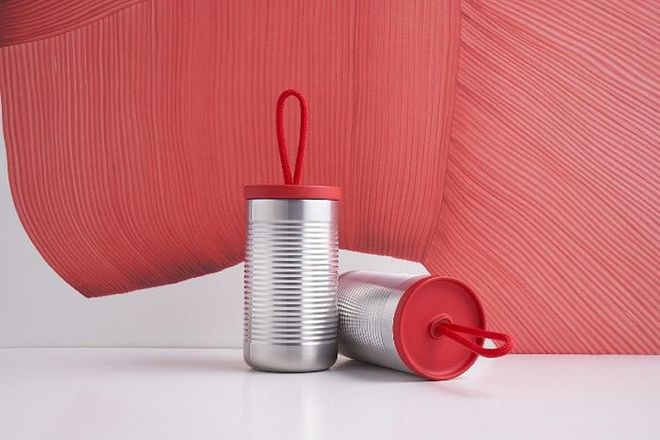
Reuse Lab's KopiCup Photo: Courtesy
Reuse Lab KopiCup
What were some challenges you faced in the course of developing Reuse Lab?
The main challenge of nudging cultural behaviours towards reuse practices lies in how we might shift from disposable packaging to reusable models with the least friction. The philosophy of Reuse Lab lies in the belief that global principles of circularity need local cultural pivots to ensure the widest possible adoption. The circular innovations proposed by Reuse Lab are rooted in ethnographic research, where we observed and listened to the hawkers and customers with empathy. Particularly in Asia where the food culture is rich and diverse, the needs of both consumers and food vendors must be addressed.
What did you learn in the process?
We learned the importance of explaining the benefits of reusable models, so we conducted a Life Cycle Analysis (LCA) to visualise the difference in carbon footprint of a reusable model compared to single use disposables. Through the research and interviews with food stall owners, we realised how aware and concerned they are about using plastic to pack their food. The food they sell is very affordable and their margins are very tight—so they still have to use plastic packaging—but they are very excited to explore reusable food container models and stop using single-use plastic containers.

Reuse Lab's Compostable Paper LinerPhoto: Courtesy
Reuse Lab Compostable Paper Liner
Why is Reuse Lab important to Forest & Whale?
Reuse Lab represents our commitment to making our environment a better place for future generations, using our research and design skills to make a difference.
What do you hope to achieve with this project?
We hope to engage in meaningful conversation with different stakeholders and bring circular models in food packaging to the masses. At the same time, we hope to create awareness of traditional sustainable practices and how new models can not only benefit the environment but also create meaningful interactions among different parties, as everyone works together towards a common goal.
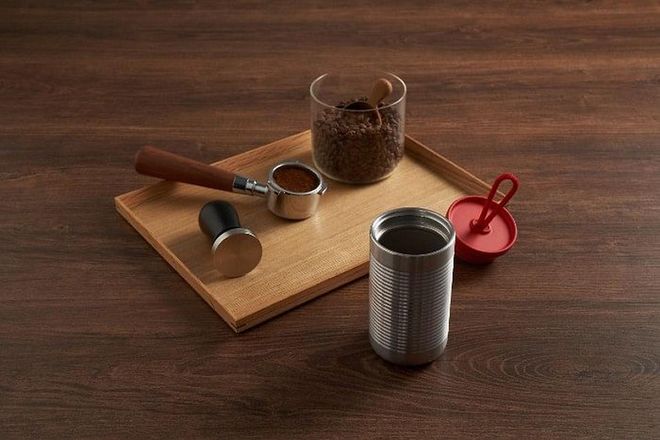
Photo: Courtesy
Reuse Lab KopiCup
What would you like the public to take away from your showcase at the National Design Centre?
We would love for people to get involved in the conversation, and bring the ideas we shared to their homes and workplaces. We also hope that our LCA infographic will provide the necessary information to understand the importance of reusable models. Finally, we would like to invite those that are currently using disposables to try reusable models—maybe starting with a reusable coffee cup—and grow this movement towards a circular economy.
Related article: Meet TBFI’s New Cadre Of Sustainability-Focused Startups
Make in Shop by GINLEE Studio
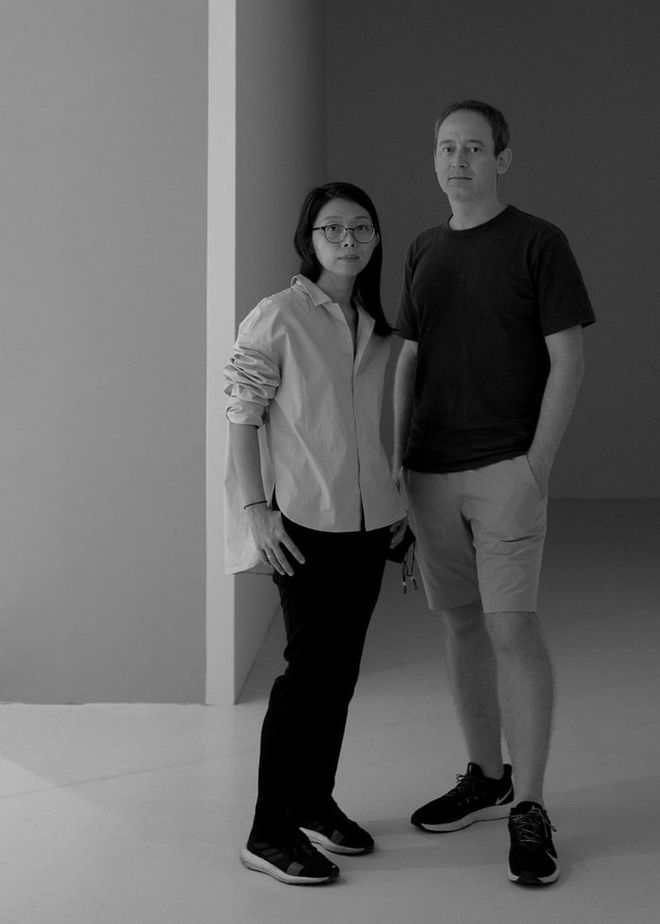
GINLEE Studio's Tamir Niv and Gin LeePhoto: Courtesy
GINLEE Studio Tamir Niv and Gin Lee
Tell us about Make in Shop as part of DesignSingapore's GDR initiative.
The Make in Shop initiative is about localising production by modernising craft. We believe that we can create more sustainable solutions by re-looking at how we are manufacturing our products. To bring back disappearing local trades like your shoemaker, carpenter and seamstress in a smart, sustainable way.
How has your experience with GINLEE Studio shaped the creation of an on-demand and on-the-spot manufacturing solution?
After running a fashion business for a while and trying to play by the rules of the industry, we felt the need to change things up. How we can make things more sustainably, and how we draw people to find time in their busy schedules to come down to our shop and experience fashion retail differently?
Fast fashion is very much built on encouraging consumption, and with it comes excessive wastage and a high environmental cost. We ask ourselves firstly if things that we make are worth making, and we ask our customers the same. We see our customer’s experiences as part of the design work.
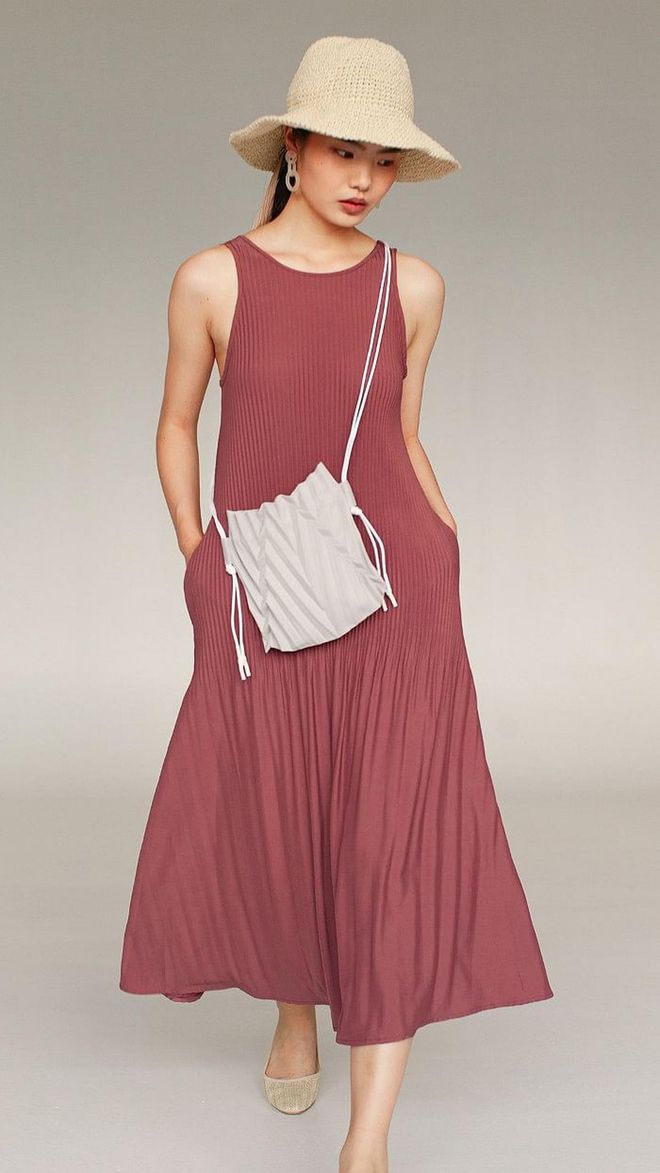
GINLEE Studio's Make in Shop offers on-demand and on-the-spot production for its range.Photo: Courtesy
GINLEE Studio
Take us through your design process. What factors did you consider and how did you go about addressing them?
We are both designers who are very much connected to the user and functionality. In terms of clothes, our wearer is always in the centre—we think of her daily schedule, her body, her feelings when she wears that dress. We try our best to make things that’s worth being made, that are unique. We also love to juxtapose cultural references in both fashion and product design.
For Make in Shop, the whole design process was very much intertwined. We have redesigned our production process by creating modules that can be quickly assembled in the shop. We were adamant about designing the production modules that doesn't require sewing. We wanted the consumers to understand that the whole process is designed—so even though it is highly customisable, it is not made-to-measure.
How do you envision the series of concept stores will revitalise brick and mortar retail? How different will it be from other concept stores in the market?
With local and international e-commerce channels becoming so convenient and available, there’s no real need to go out shopping. But we will probably not want to stay home all day for long. I believe that we should spend our time on unique meaningful experiences. This is where brick and mortar retail is heading, and that’s exactly the challenge, for local brands to make a difference. There is value in locally made and locally designed products.

Create your own top and bag with Make in Shop.Photo: Courtesy
GINLEE Studio Make in Shop
What were some challenges you faced in the course of developing Make in Shop?
The main challenge was to build something that had not yet been created. We had to design the process, the tools and the product at the same time in order to achieve the concept.
What did you learn in the process?
This research project has seen us ideate, prototype, and test numerous rounds for every aspect of the Make in Shop product and experience. Our learning lies in overcoming problems and providing a new and exciting shopping experience along the way, such as bringing an industrial manufacturing process into a shop environment, finding alternatives to traditional pleating moulds that would break apart after a few uses by using new 3D printing technologies.

Make in Shop's pleating moulds.Photo: Courtesy
GINLEE Make in Shop Pleats
Why is Make in Shop important to GINLEE Studio?
At GINLEE Studio, we want to make things in more sustainable ways. We are focusing on fighting waste and over-production by matching our production to customers' demand, sharing that with our customers, and making them a part of the decision-making process.
What do you hope to achieve with this project?
Make in Shop is based on the craft of pleating, but we have many other crafts to revive and new experiences to create. The vision is to create the seamstress shop, the shoemaker shop, and the jeweller of the future—all locally and smartly made on-demand.
What would you like the public to take away from your showcase at the National Design Centre?
We hope to change our customer’s mindset when it comes to Slow Fashion and learning how things are made. We can be proud of doing things smartly and sustainably, be amazed by innovation and experience the creation of things that we own.
The Good Design Research showcase runs from now till September 2022 at Pop-up Gallery, Level 1, National Design Centre. More information on the current showcase here.
Related article: Singaporean Designer Gin Lee Makes Her Mark With Clever Pleats And A Passion To Make Fashion Sustainable
Workplace Mental Health and Well-being by Common Ground
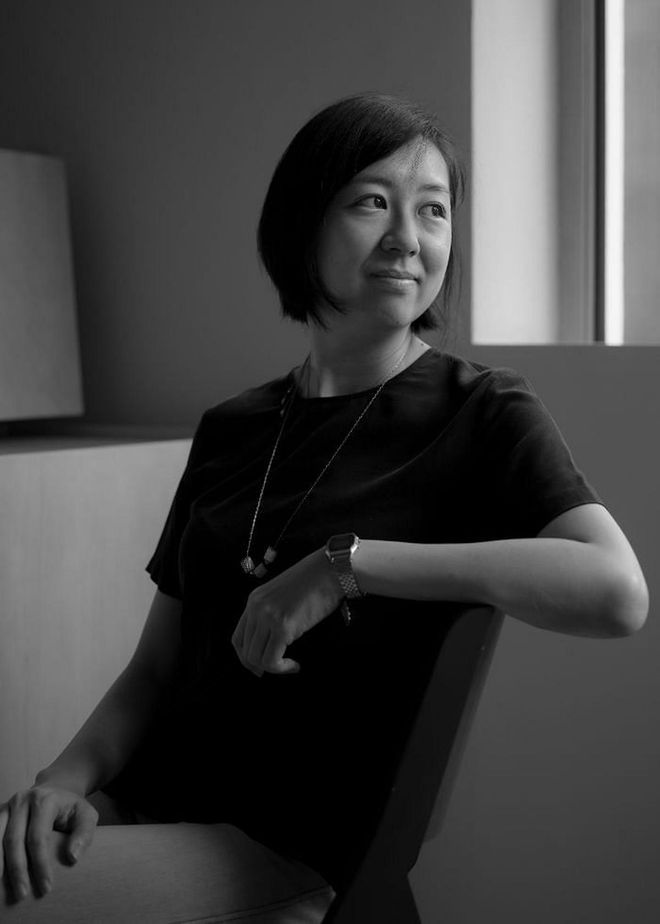
Common Ground's Khee Shi Hui. Photo: Courtesy
Common Ground Khee Shi Hui
Tell us about Designing Practices for Better Mental Health and Well-being at Workplaces as part of DesignSingapore's GDR initiative.
Conversations around mental health and well-being in the workplace have gained increasing urgency in recent years, especially after the disruptions COVID-19 brought about. Curious about what the future of the workplace could look like, we turned to designers to bring fresh perspectives, creative energies and service design skills to improve the mental health conditions in the workplace.
Common Ground, together with our resident partner Studio Dojo, piloted a 5-month-long citizen-led, ground-up process to explore new community-led possibilities around mental health and well-being practices at the workplace that could complement medical or therapeutic support. We formed our cohort with four organisations and 15 volunteer designers—each team of three to five designers were matched with an organisation to redesign current mental well-being initiatives and reimagine the future of the workplace.
Take us through your design process. What factors did you consider and how did you go about addressing them?
In mid 2020, Common Ground and Studio Dojo supported a mental health sector stakeholder to understand the landscape, target community and needs. Thereafter, we formed the research question: “What is the experience of a young person in Singapore discovering that they have a mental health condition?" and shared our findings with stakeholders in the mental health scene.
In January this year, we delved deeper into mental health at the workplace and interviewed 10 senior management staff from private and public institutions on the ways they approach and manage mental health at the workplace. We used the Grounded Theory approach—which provided an iterative, interactive way of allowing insights to naturally emerge from the data—to make sense of the two sets of interview data that we had.
In a five-step process, a team of four coders first wrote initial memos, came together to develop a codebook, then individually re-coded the transcripts. With the new memos, the team then collectively discussed and crafted insights, resulting in journey maps and a report. The designers then did their own research process within the organisation they were matched with to gain a deeper understanding of the issue before coming up with prototypes to address these challenges.

Common Ground worked with design firm Studio Dojo to create a journey Map. Photo: Courtesy
Common Ground Workplace Mental Health
What were some challenges you faced throughout the course of the project?
As the organisers of this programme, our challenges were not around the prototyping of mental health practices as that was the task for the designers. Instead, our challenges were:
What did you learn in the process?
As the project unfolds and progresses, it is natural that new opportunities and challenges will pop up and could possibly derail the original direction. Having clarity of intent at the beginning and keeping it at the forefront throughout the entire project is important to keep the project focused and aligned.
The role of conveners is essential for projects and innovations like this, yet there is a large gap in funding support. Grants very rarely fund research purposes—even though stakeholders recognise the need for research to be more robust—as interventions are informed by what is discovered during the research process.
Why is this project important to Common Ground?
Common Ground’s mission is to create whole communities by helping individual citizens, community builders, civil servants and organisations across sectors/industries to develop the skills, connections and opportunities to solve problems collectively. This project has allowed us to do exactly that. By being the conveners of this programme, we are bringing valuable and highly sought-after skill sets of volunteer designers to address mental health challenges at the workplace, injecting fresh and creative energies into a relatively long-drawn situation in our community. Furthermore, these individuals immerse themselves in understanding a social issue deeply, and the organisations benefit from the insights, learnings and prototypes that arise from this project.

Common Ground hopes to manage burn-outs and stress at work before they become mental health issues. Photo: Courtesy
Common Ground Workplace Mental Health
What do you hope to achieve with this project?
After the five-month process, we will produce a playbook documenting the journeys of our cohort, and also feature key learnings and insights. On a broad sector level, this will be shared with other design and social sector-oriented organisations, with the hopes that it will inspire others to create something similar on their own and grow the frequency and quality of collaborative partnerships.
We also see this as an opportunity to position the service design skill set as a tool for social change, which ideally leads to an increased recognition of the importance and role design plays in the social sector, as well as the professional resources available to work on social issues.
For organisations, we want this programme to spark more conversations around mental health at the workplace, so more attention and resources are pumped into improving and enhancing the level of support dedicated to mental wellness practices. As for the designers, this experience offers the chance to sharpen their craft, upskill their understanding and knowledge of organisational development, learning and development, and forge a connection with and desire to use their professional skills to do social good.
What would you like the public to take away from your showcase at the National Design Centre?
Check in with yourself and reflect where you are at with your own mental health. Start mental health conversations in your workplace and push for greater support. Envision how you would utilise service design towards a social issue that you care about—what would that look like?
This story was originally published on 8/11/21 and has been updated.
Related article: Calm Collective Asia: Normalising Mental Health In Asia, One Click At A Time